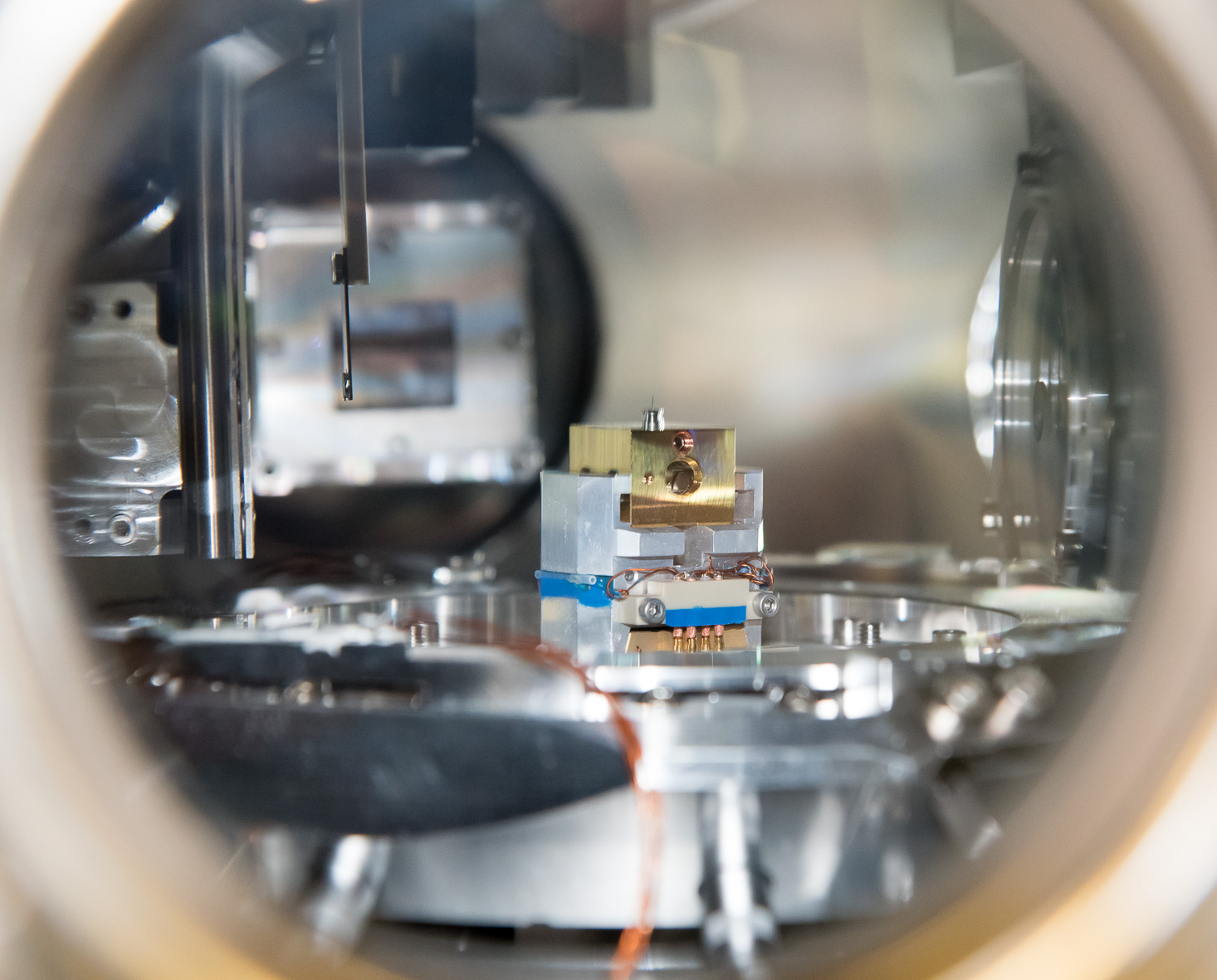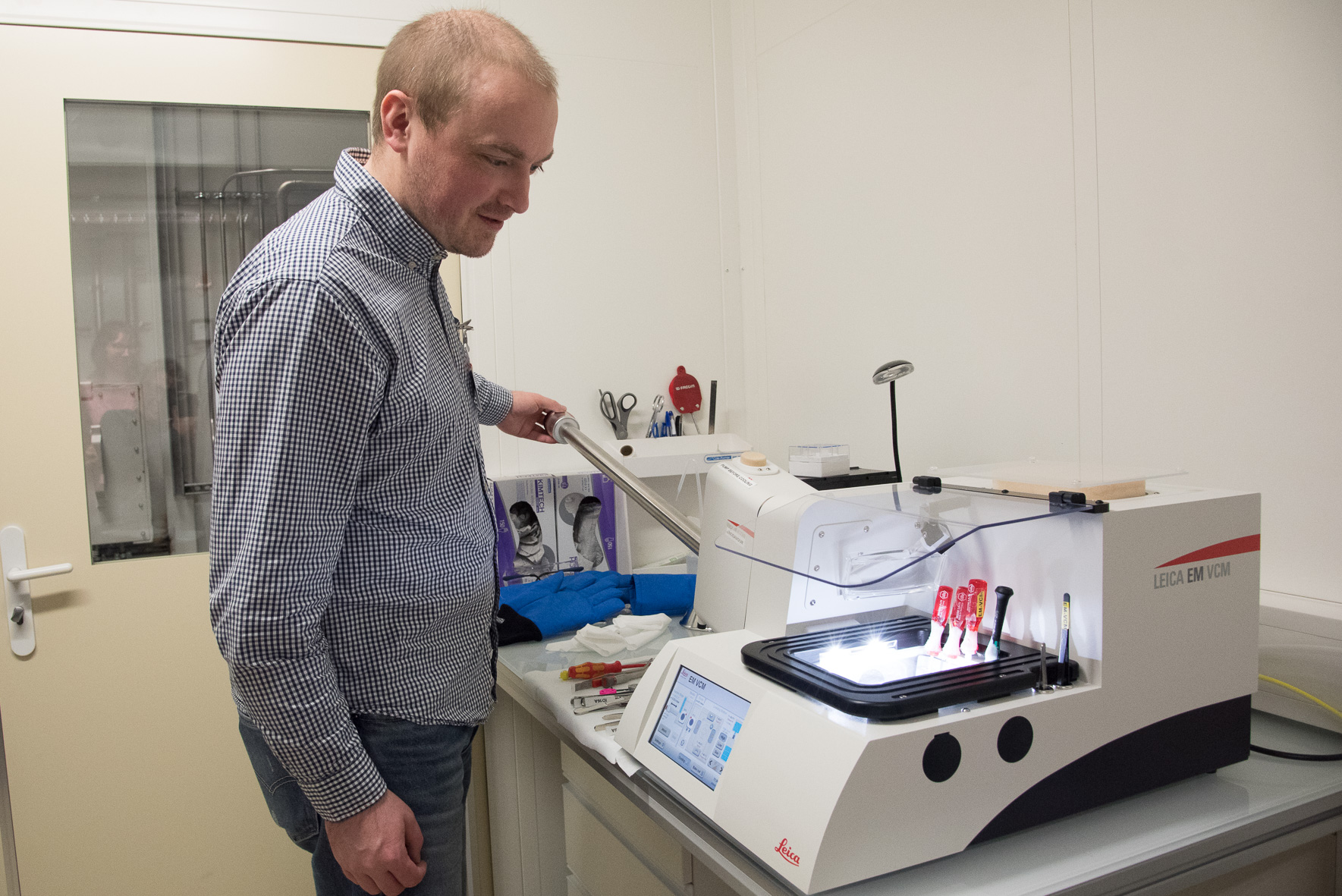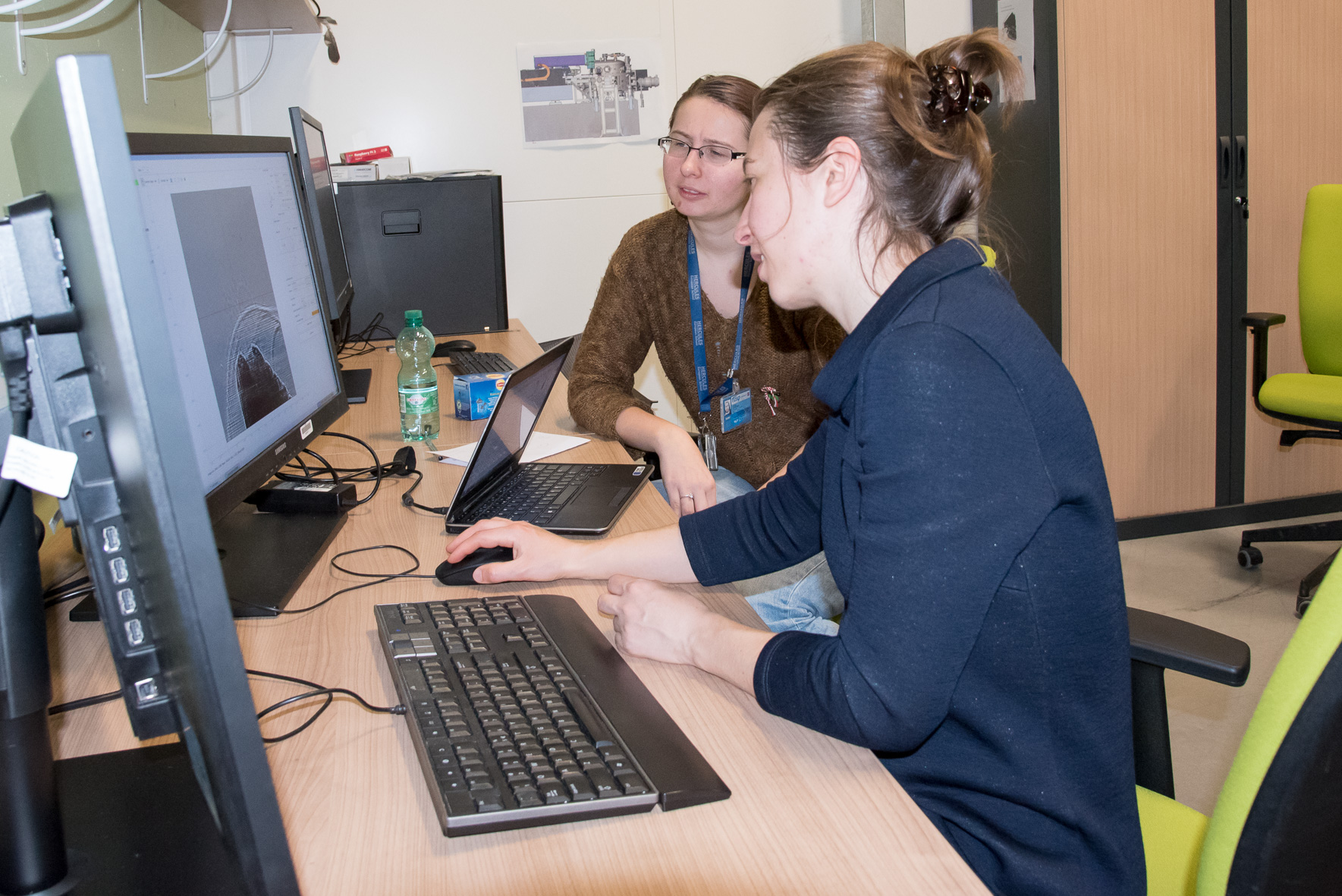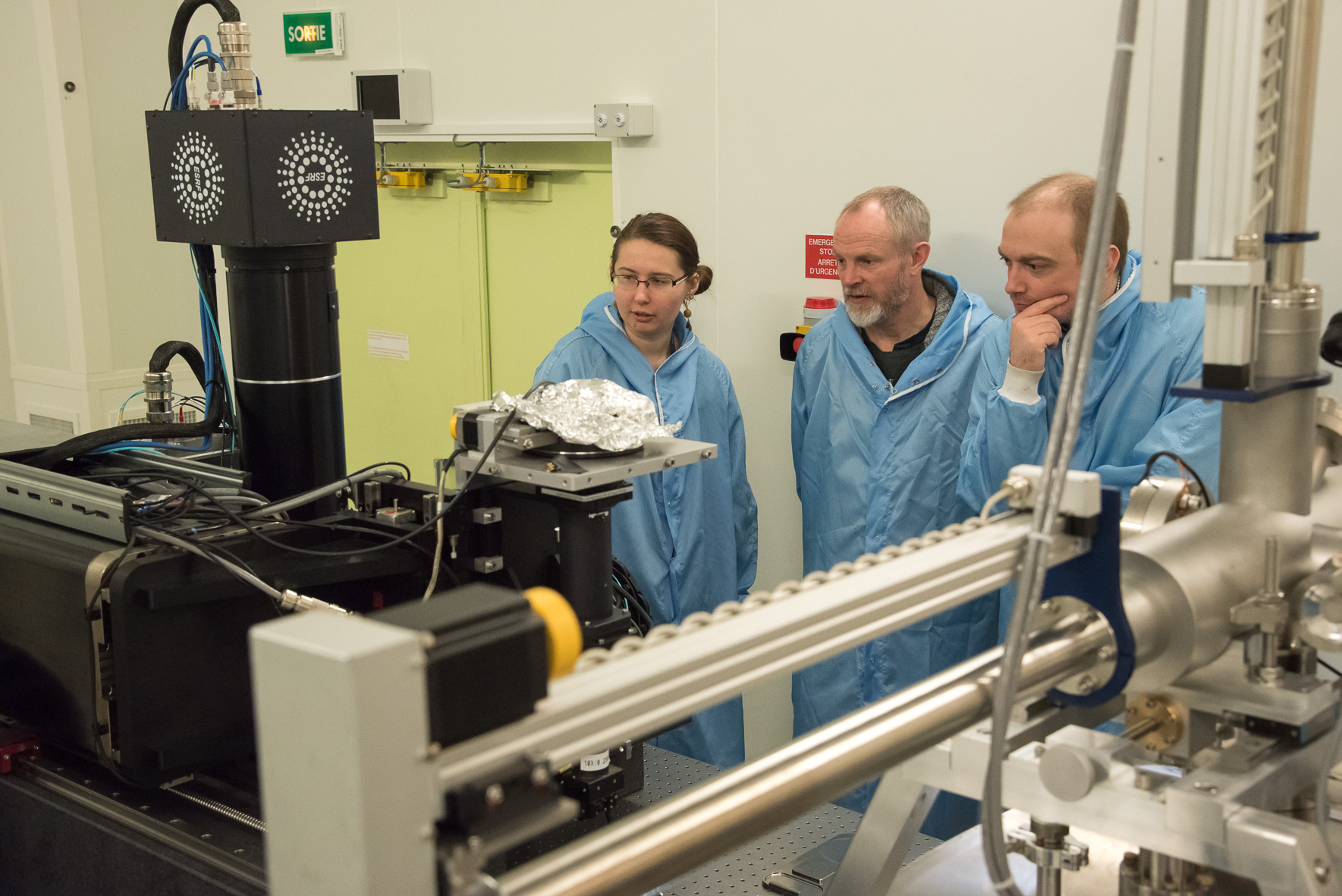- Home
- News
- General News
- #weekendusers What...
#weekendusers What makes pollen walls the most durable biological material?
05-03-2018
Sporopollenin is the most durable biological material in nature and is a major component of the outer wall of pollen. Scientists at the Natural History Museum (UK) and the ESRF are investigating the structure of the pollen wall this past weekend, on ID16A, to find out why this material is so resistant.
This experiment would not have taken place if chance, luck, but mostly curiosity had not played a major role in this story. ESRF post-doctoral researcher Ruxandra Cojocaru was talking to colleagues at the facility, looking for an appropriate material for a sedimentation study. Many discussions later, she ended up finding what she needed at the Natural History Museum in London, where curator and pollen specialist Stephen Stukins works.
Several exchanges later, and with an approved proposal for a different project than the original, they are now on ID16A to study the structure of pollen at nanolevel. “Throughout time, there have been species that have disappeared, yet the major plant groups have been relatively resistant to extinction. This may be due to the resistant sporopollenin material that was adapted for plant survival on land, especially exposure to UV radiation”, explains Stukins. With fellow NHM microfossil curator Giles Miller, he has brought fossil samples of Bathonian age, from the Jurassic era, that are part of the museum collection. “What we want to see is the structure of pollen, and more precisely of the sporopollenin outer wall. This is an almost inert biological polymer and we think it is key to the properties of pollen”, says Stukins.
The aim of the experiment is not only to look at fossilised pollen but also pollen collected recently from living plants. “The idea is to compare the results of the fossil pollen with modern pollen and see how, or if structures in the sporopollenin have evolved”, Cojocaru adds. “I’ve been examining the trees around the ESRF, looking for a good sample representing today’s pollen”, says Cojocaru, who normally works in metrology, with a smile. “It is great to be part of this project”, she says, “even if it is quite far from what I do on a daily basis”.
|
|
 |
|
On the beamline (from left to right: Cojocaru, Miller and Stukins) and the sample in its set-up. |
|
Pollen is not a trivial material to work with and it needs to go under cryogenic conditions to be able to be studied on the beamline using nanotomography. “It is a challenging sample, the grains measure only a few tens of microns and we need to work in cryogenic conditions to make sure we resolve very fine internal structures”, explains Alexandra Pacureanu, scientist on ID16A and local contact for this experiment.
The team are in high spirits and optimistic of the results. On Friday morning, after the first test scan, Pacureanu shows the team the screen in the control room: “look, you can already see a lot of detail of the pollen”. The experiment looks promising.
 |
 |
|
Stephen Stukins during the preparation of the sample (left), and Alexandra Pacureanu and Roxana Cojocaru in the control hutch, viewing the first scans (right). |
|
Text by Montserrat Capellas Espuny. Photos by Chantal Argoud.
Top image: Scanning electron micrograph of false colored pollen. Credits: Asja Radja




